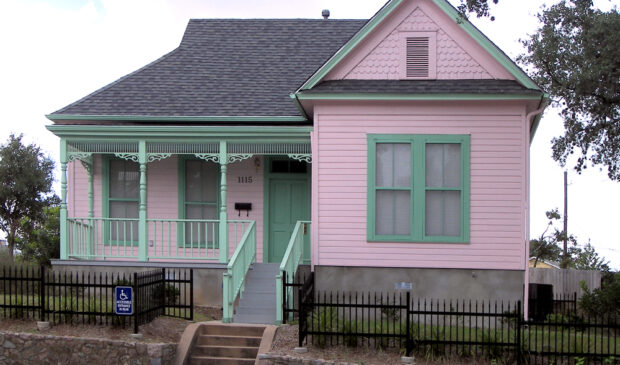City to tally public assets in 78702 with goal of preservation and activation
Monday, April 22, 2024 by
Chad Swiatecki The city will inventory all of the culturally and economically significant publicly owned real estate just east of downtown in a move intended to preserve and enhance locations central to the area’s longtime Black and Latino communities.
A resolution passed at Thursday’s City Council meeting calls for the city manager to oversee cataloging of all public land in the 78702 ZIP code, which is mostly bounded by Interstate 35, Martin Luther King Jr. Boulevard, Airport Boulevard and the northern banks of the Colorado River. The resolution, which was led by Council Member Natasha Harper-Madison, also directs staff to create recommendations for the planning, preservation and activation of those assets in coordination with nearby private entities.
Located just east of downtown, the area contains a high concentration of community fixtures that need to remain in place and figure into the population growth taking place in East Austin, Harper-Madison said. The resolution identifies roughly four dozen parks, schools, community centers and other public assets that should be figured into the inventory and initial recommendations, which are due in February.
“It is crucial that as we recognize and honor the history of this area, we need to recognize that we’re preserving the landmarks, supporting cultural initiatives and reconciling, frankly, the impacts of past injustices that this part of town has experienced,” Harper-Madison said prior to the resolution’s passage on the consent agenda. “This resolution goes beyond preservation and upkeep. It’s about exploring new opportunities to utilize our assets to bring more attention and visibility to them.”
During public comment, multiple speakers said they supported the intent of the item but wanted stronger language on the public engagement process that would follow the inventory and recommendations. A second version of the amendment that was distributed prior to public comment and the consent agenda vote included direction for community engagement with relevant neighborhood groups, businesses and organizations.
“The resolution is kind of overly vague, and the ambiguity raises some concerns that it could lay the foundation for unwarranted deviation from defined planning and zoning practices in a way that excludes or otherwise adversely impacts constituents living in 78702,” said Chris Page, neighborhood association president for Homewood Heights, which is within the ZIP code.
Page also highlighted the threat that short-term rental properties could represent to the area. He asked for more specific language on how the inventory would impact the long-planned redevelopment of Block 16 and Block 18 on East 11th Street.
Harper-Madison told Austin Monitor said she and other community leaders need to envision what the different portions of District 1 will look like in another 10 or 20 years and find a way to balance the forces of capitalism with historic preservation.
“So many of the landmarks are so close together that they are inherently directly connected. You dig even a little bit deeper and then you recognize what the implications are historically and then from a future-facing perspective. And you realize you have to do preservation and future-facing planning all at the same time,” she said. “With the work that we’ve been able to accomplish with the Northeast Planning District and this historic interlocal agreement with the (Travis) County folks, and the work we’re doing at Colony Park, and the work on lots of plans for what’s going to be happening east of (U.S. Highway) 183 … (the) 78702 (resolution) was born of recognition of the direct connections between all of these assets, both privately held and publicly held.”
Looking ahead to next year, Harper-Madison said she would favor staff delivering a menu of possible options and strategies related to the ZIP code that are financially and legally realistic, with the community able to comment on and shape what actions the city moves forward with.
“I think a suite of options is the best way to go, but we shouldn’t go into community engagement opportunities with the assumption that we know what the community needs. I’d like for the slate to be blank enough for us to have the process actually be guided by the people who live there,” she said. “The reason for having a suite of options is to streamline the process. You can have too much engagement. You can have too much outreach at the point where it’s like that whole concept of diminishing returns – then you missed the mark.”
Photo by Larry D. Moore, CC BY 4.0, Link.
The Austin Monitor’s work is made possible by donations from the community. Though our reporting covers donors from time to time, we are careful to keep business and editorial efforts separate while maintaining transparency. A complete list of donors is available here, and our code of ethics is explained here.
You're a community leader
And we’re honored you look to us for serious, in-depth news. You know a strong community needs local and dedicated watchdog reporting. We’re here for you and that won’t change. Now will you take the powerful next step and support our nonprofit news organization?










